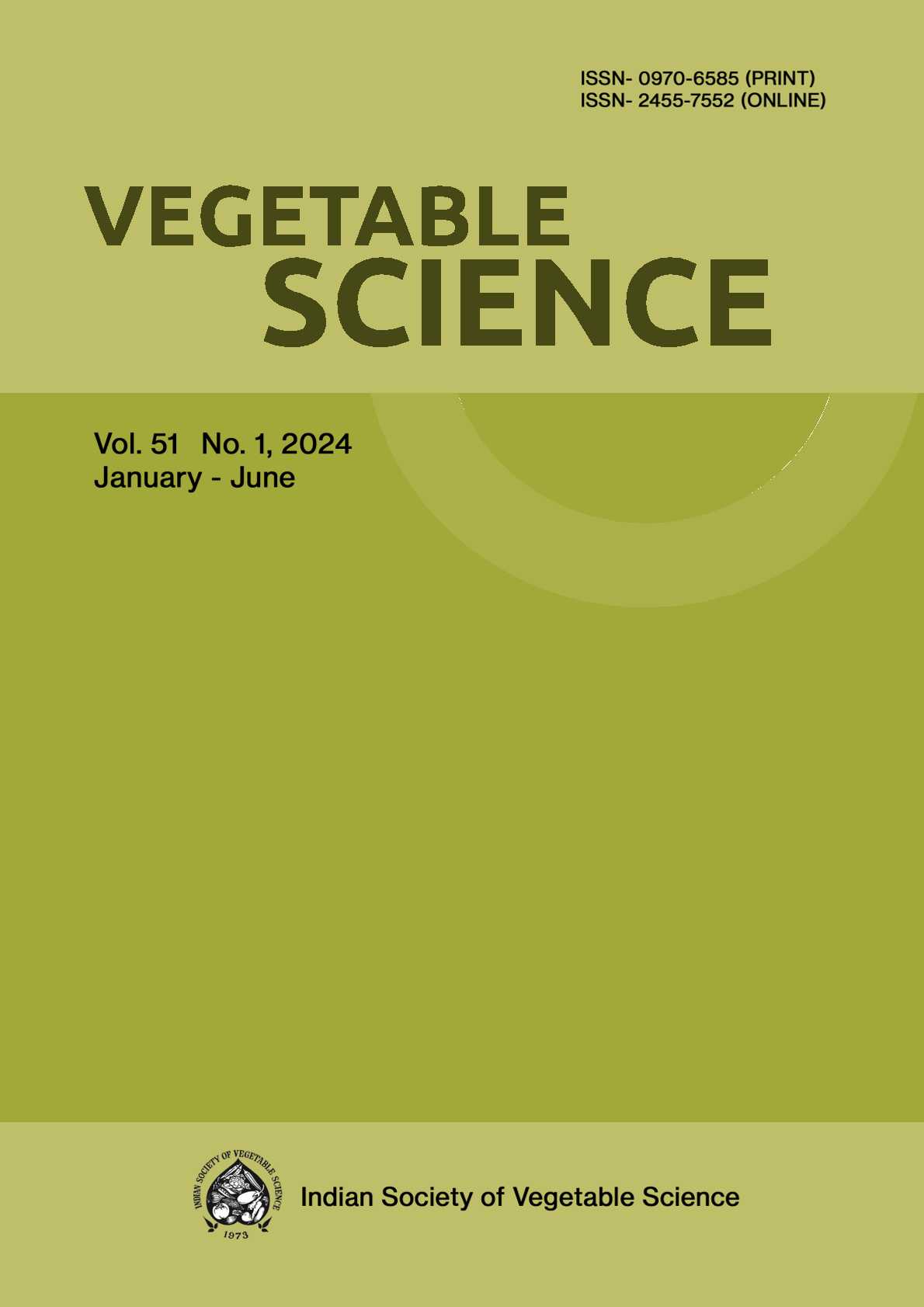Navigating Challenges and Prospects in Off-Season Vegetable Production
DOI:
https://doi.org/10.61180/vegsci.2024.v51.spl.09Keywords:
Year-round harvest, sustainable farming, river bed cultivation, protected cultivation.Abstract
The demand for vegetables in India is substantial, driven by widespread vegetarian dietary preferences. However, the supply often falls short due to the inability to grow all types of vegetables throughout the year. This emphasizes the significance of off-season vegetable cultivation, offering a solution for year-round production, controlling price fluctuations during off-seasons, and ensuring accessibility for people across different economic classes. Off-season cultivation plays a pivotal role in addressing nutritional deficiencies and providing economic returns to farmers, especially during periods of market surplus and falling prices. Consequently, there has been a notable increase in off-season cultivation practices, where crops are grown outside the regular cropping calendar to counter supply shortages and capitalize on high market prices. Various methods are employed for cultivating off-season vegetables, including leveraging a country’s agro-climatic diversity, using different varieties, cultivating in diara lands/riverbeds, and employing protected cultivation. However, this review specifically focuses on diara/riverbed and protected cultivation of vegetables for their off-season production. While these practices have shown promise, ensuring consistent technical support, training, and a reliable supply of inputs like seeds and fertilizers, along with market information, is crucial for sustaining the adoption of agricultural technologies. Long-term success depends on accessible extension services, and the combined impact of various technologies contributes to improved off-season agricultural practices. This underscores the importance of farmer-centric policies in guiding enduring technology adoption. Factors such as education, experience in vegetable production, access to extension services, and training significantly influence farmers’ decisions regarding technology adoption.
Downloads
Published
Issue
Section
License

This work is licensed under a Creative Commons Attribution-NonCommercial-NoDerivatives 4.0 International License.






